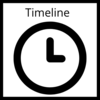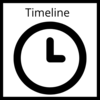Clickable Floor Plans
Welcome to the University of Waterloo Library! To help you physically navigate Dana Porter and Davis Centre Libraries – our two largest library locations – these interactive floor plans can point you in the right direction to easily access the resources and services that can help you succeed. Choose a floor, then select any of the clickable information buttons to learn more.


Assignments in math courses are usually a list of problems to be solved. Each question may be of various difficulties and types, which are marked and returned to the student to be used as a source of feedback.
Math assignments are designed to provide opportunities for 'doing math' and to consolidate students’ understanding of the content. The questions often come from the most recent week of learned material, but some questions may require students to synthesize concepts from further back. This is because learning math is cumulative by nature; you continuously build upon what you've learned before.
Because math assignments are typically used as a checkpoint for understanding, they tend to weigh less than other assessments in terms of grade, therefore, it's important to treat them as learning opportunities instead of a tool for maximizing course grades.
Click on the Timeline for a visual representation of the timeline. Click on the Checklist for a document containing the checklist items for a math assignment.


An article review is a critical evaluation of an article. To write an article review, you select and read an article carefully, and summarize the author’s main ideas and research findings. You then provide your own evaluation and critique based on your analysis of the article and your knowledge of the topic.


A literature review makes connections across research in an existing area of study. It evaluates multiple sources and draws conclusions about the primary themes. It also suggests opportunities for future research and may be presented either as a standalone document or part of a larger research project.
When you do a literature review, you find, read, analyse, and synthesize existing research. You demonstrate that you understand what has been written on the subject so far, and are now in a position to contribute to further research.


In a critical reflection, we examine our biases, compare theories with current actions, search for causes and triggers, and identify problems at their core. A critical reflection is not a reading assignment, a summary of an activity, or an emotional outlet. When we reflect critically, we have two goals:
- to critique our existing beliefs and assumptions
- to transform our beliefs, feelings, and actions
In academic courses, a critical reflection is often part of a formal essay assignment.


Lab experiments allow you to observe scientific concepts in action and practice research techniques. A lab report provides a formal record of an experiment, specific enough so that an experiment can be replicated by others. As a student in the sciences, you’ll find that lab reports are a common way for you to share your own scientific knowledge.
Click on the Timeline for a visual representation of the timeline. Click on the Checklist for a document containing the checklist items for a lab report.
For help with pre-lab planning, follow the guidance from WriteOnline.ca's Part B: Planning and Researching.


The main goal of a research paper is to investigate a particular issue and provide new perspectives or solutions. The writer uses their own original research and/or evaluation of others' research to present a unique, sound, and convincing argument.
Although the final version of a research paper should be well-organized, logical, and clear, the path to writing one is not a straight line. It involves research, critical thinking, source evaluation, organization, and writing. These stages are not linear; instead, the writer weaves back and forth, and the paper's focus and argument grows and changes throughout the process.
Click on the Timeline for a visual representation of the timeline. Click on the Checklist for a document containing the checklist items for a research essay.
What is a Poster Presentation?


Poster presentations are a powerful tool for communicating your research. A good poster presentation has both quality research and great visual support. Most STEM posters are presented in a session where participants answer questions from attendees.
Posters are a visual medium. Use graphs, images, infographics, and any other relevant visual support to grab your audience's attention and give them a quick summary of your topic. Interested viewers should be able to look at your poster and understand what you did, why you did it, and what you found.
Click on the Timeline for a visual representation of the timeline. Click on the Checklist for a document containing the checklist items for a STEM poster presentation.